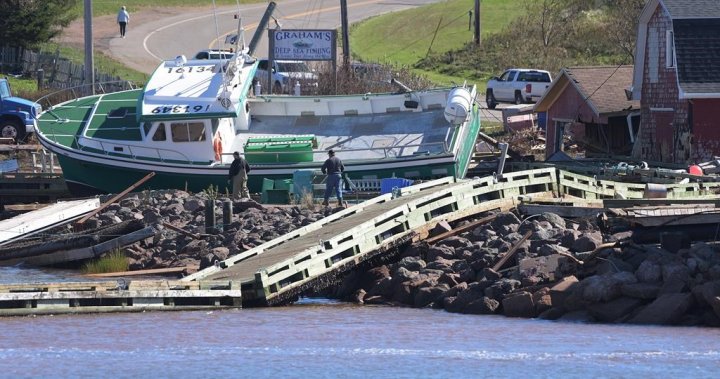
Rising oceans, storm surges ‘disaster in slow motion’ for coasts. Here’s why
Global News
The rate of global sea level rise is accelerating, and seas have risen about 20 centimetres since the beginning of the 20th century.
Tides are rising, sands are shifting and coastlines are crumbling. As studies warn of rising seas and accelerated erosion resulting from climate change, coastal communities in CaCanada are wondering what the future holds.
“Living on the coast is part of our economic, our social, our cultural fabric. It’s people’s livelihoods. It’s hard to move from those coasts,” said Chris Houser, an environmental sciences professor at University of Windsor and part of the school’s coastal research group. “It’s going to be a very difficult period as we see some of these coastal areas eroded or being impacted further by sea level rise and storms.”
Communities on Canada’s east and west coasts face the risk of slipping below swelling tides as water levels inch up. An Intergovernmental Panel on Climate Change report released last year said the rate of global sea level rise is accelerating, and seas have risen about 20 centimetres since the beginning of the 20th century.
John Clague, an earth sciences professor at Simon Fraser University in Burnaby, B.C., said even a few millimetres make a difference, especially when effects are exacerbated by fierce storms like Fiona which battered Atlantic Canada in September.
“It’s a disaster in slow motion,” he said. He noted that Fiona produced a lot of erosion. “And that’s permanent. Once it’s done, it’s done.”
On the other side of the country, municipalities such as Richmond, B.C., with a population of over a quarter of a million people, are living with a “threat at their doorstep,” he said. The area is home to the Deltaport, one of Canada’s most important export facilities, as well as Vancouver International Airport and trillions of dollars worth of other critical infrastructure that cannot easily be abandoned or relocated, he said.
The most immediate solution being implemented is that newer buildings along the shore are elevated by a metre to account for expected sea level rise, he said, but that’s a temporary fix.
“We’re just kicking the problem down the road,” Clague said.





















 Run 3 Space | Play Space Running Game
Run 3 Space | Play Space Running Game Traffic Jam 3D | Online Racing Game
Traffic Jam 3D | Online Racing Game Duck Hunt | Play Old Classic Game
Duck Hunt | Play Old Classic Game











